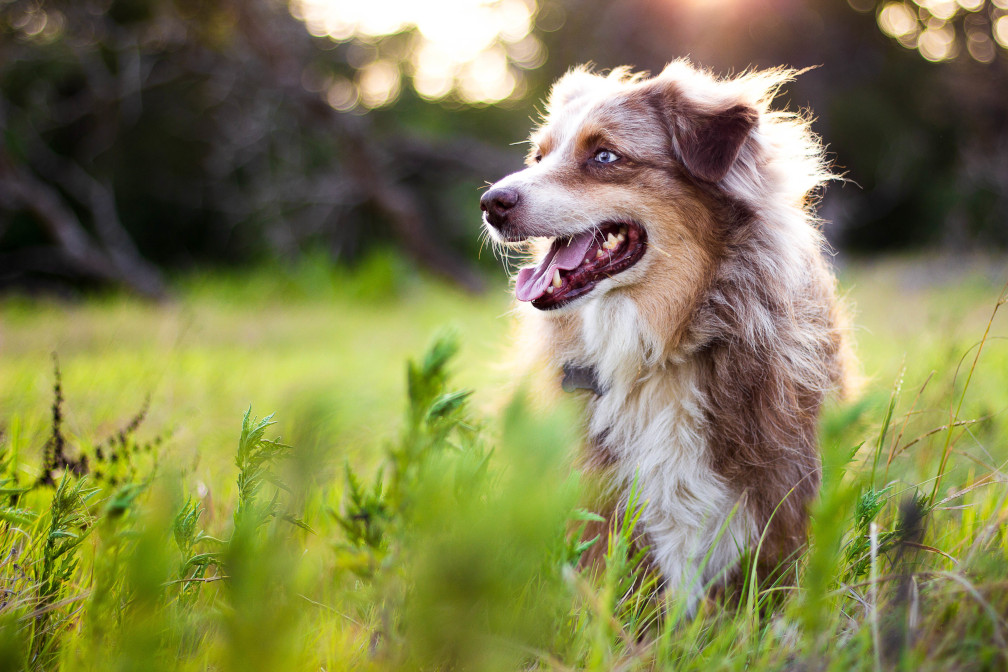
Dog and puppy mites are not that common, but dog parents should be aware of how to spot the signs of a mite infestation so that treatment can be sought. Mites can affect your dog’s skin and coat, causing itchiness, red and inflamed skin, hair loss, as well as discomfort and distress for your dog. There is also an increased risk of secondary infections occurring from your dog’s open skin sores, which can cause further health complications.
In this article, we help dog parents understand what dog skin mites are, the common types we see in dogs, and how to identify the signs of an infestation. By knowing how the transmission of a dog mite occurs, and through implementing our preventative measures, you’ll be better equipped to deal with dog mites. We also advise you on the potential risks of dog mites, so you can protect your dog’s overall health and well-being.What are dog mites?
Dog mites are external parasitic arachnids, meaning they have eight legs, and are extremely small in size (less than 1mm). Mites are commonly found in the environment, especially as eggs, until they find a host to infest. They nestle themselves into your dog’s skin and fur, which leads to itchiness, inflammation and irritation. We discuss the life cycle of mites in more detail, as well as the most common types of dog skin mites below.
What are the most common types of mites in dogs?
The most common types of mites that cause the skin disease called mange in dogs include Sarcoptes scabiei (known as Scabies), Demodex canis (known as Demodectic mange)and Otodectes cynotis (ear mites, also known as Otodectic mange). While all three types of dog/puppy mites are small in size and they can affect dogs in different ways.
Sarcoptes mites have round bodies covered in bristles and can cause sarcoptic mange, or Scabies as it’s often called, in dogs, an extremely itchy skin condition. Due to scratching, dogs may develop red, inflamed and crusty skin lesions and experience hair loss. The open skin sores are also susceptible to secondary bacterial and yeast infections. Sarcoptes mites usually target areas with thin skin and less hair, such as your dog’s ears, elbows, armpits and stomach, however, they can spread to other parts of their bodies. Scabies is highly contagious and can pass from dogs to humans, and vice versa.
Demodex mites are cigar-shaped and naturally exist in low numbers in your dog’s skin after being passed to puppies from their mothers. However, in dogs with weakened immune systems, these mites can grow out of control and cause demodectic mange - leading to red, itchy and inflamed skin, as well as hair loss. Depending on whether the mange is localised or generalised, Demodex mites may be present on your dog’s face, neck, paws, legs and bottom. Demodectic Mange is not contagious to other dogs or to humans.
Ear mites, as expected, infest your dog’s ears, which is why you may notice your dog shaking their head to manage the itchiness. They can cause inflammation and redness in your dog’s ears, with a risk of secondary bacterial or yeast infections occurring from scratching. There may also be dark and waxy discharge visible in their ear canals. Ear mites can be contagious and pass to other dogs, but they are not contagious to humans.
How can you identify dog mites infestations?
You can identify a dog mite infestation from the following signs and symptoms:
Severe scratching
Excessive licking of fur
Hair loss (or patchiness)
Red, inflamed or irritated skin
Crusty skin or open sores
Visible mites on the skin
It’s important that dog parents closely observe their dog’s behaviour, skin condition and overall health, in order to notice and address any potential issues. If your dog is showing signs of discomfort, restlessness or agitation, it’s essential to work out the underlying cause. Your dog’s itching and scratching may be due to mites on their skin, in which case you should check to see if their skin is red or inflamed, if there are any open wounds from scratching, or if you notice any bald patches or hair loss. You can also part their fur and look directly for mites. Dogs with ear mites may also shake their heads, paw at their ears, and have dark, waxy discharge in their ear canals, like coffee grounds.
How do dog mites infest dogs?
Dog mites are contagious, which is why they can be transmitted to your dog through direct or close contact with an infected animal. Demodex mites are an exception, since they start as puppy mites, their presence on a dog’s skin is normal, and demodectic mange is not considered highly contagious. However, sarcoptes and ear mites are highly contagious between dogs and other animals, and sarcoptes mites can also infect humans. In this case, you should seek advice and treatment from your doctor.
Besides direct or close contact, dog skin mitescan also be transmitted in common places such as a dog shelter or grooming salon, while dogs are out on a walk, or from other pets in the house, such as cats. This is because mites and their eggs continue to live in the environment, including the carpet, bedding or other soft furnishings, and await their next target. Dog mites can reproduce very quickly, which can fuel the infestation. This is why veterinary attention should be sought as soon as the presence of mites is detected.
What are the potential health risks associated with dog mites?
Dog mites are a parasite that cause mange, a skin disease that can cause excessive itching and hair loss in your dog. If your dog is scratching, they can damage their skin and cause open sores, which are susceptible to bacterial and yeast infections. There is also a risk for humans to be infected, for example by Sarcoptes mites.
How can dog mite infestations be prevented?
While dog mite infestations are treatable, there are preventative measures that dog owners can take to reduce the risk. We’ve listed these steps below:
1. Regular grooming
By regularly grooming your dog, and occasionally bathing your dog, you can keep their skin and coat clean and healthy. You can also use this time to check forsigns of mites on your dog’s skin. If you notice any irritated skin, open wounds, hair loss or mite presence, contact your vet.
2. Maintaining a clean living environment
While it’s important to keep your home environment clean for yourself and your pets, it’s essential that you thoroughly clean the house, as well as your dog’s belongings, soft furnishings and other surfaces, after a known mite infestation. This is to remove any eggs or mites still in the environment and prevent a re-infestation.
3. Keeping dogs away from infested animals If you know that another dog or animal has a mite infestation, keep your dog away until the coast is clear. This can be difficult at home with multiple pets, but you can try to separate the infested animal and ensure belongings aren’t shared during this time. You may also want to treat your dog or puppy for mites, just in case, and thoroughly clean your house after.
4. Keeping up with anti-parasite treatments There are anti-parasite treatments available from your vet, and by following their instructions for regular use, you can help prevent a dog mite infestation.
5. Routine veterinary check-ups It’s important to take your dog to the vet regularly to check their skin, coat and overall health. Your vet will carry out a general examination of your dog to check for common problems. If you notice any signs or symptoms of mites or mange, or if your dog shows a change in behaviour, seek veterinary care for your dog to rule out any underlying health issues.
Dog skin mites are treatable, and while their transmission is preventable with antiparasitic treatments from the vet, there are other preventative measures you can take to protect your dog. It’s essential to maintain your dog’s skin and coat health, as well as observe their behaviour and any new signs or symptoms, to get them veterinary help when necessary. A healthy diet helps to reduce the impact of mites, so make sure that your puppy or dog is receiving all of the nutrients it needs from complete and balanced food tailored to its life stage and lifestyle. James Wellbeloved™ Dog Food supports your dog’s overall health and well-being with high-quality nutrition through naturally healthy food that your dog will love.

Related Articles








